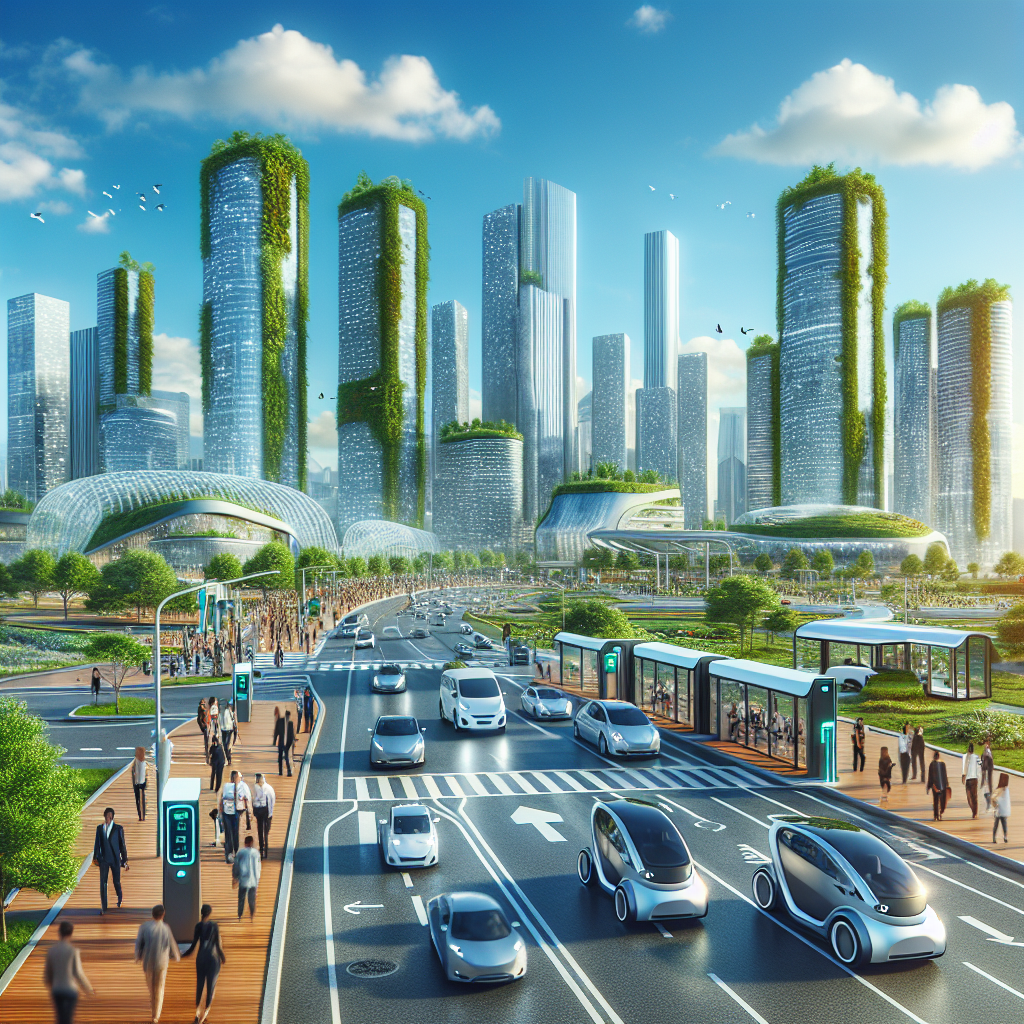Introduction
The automotive industry is undergoing a significant transformation, largely driven by the need for sustainable transportation solutions. Electric vehicles (EVs) are at the forefront of this change, offering promising alternatives to traditional gasoline-powered cars. In this article, we will explore the future of electric vehicles and their role in creating a more sustainable transportation system.
The Rise of Electric Vehicles
Electric vehicles have gained traction over the past decade due to advancements in technology, increased environmental awareness, and supportive policies. Let’s dive into the reasons contributing to the rising popularity of EVs:
- Technological Advancements: Battery technology has improved dramatically, leading to longer ranges, shorter charging times, and decreased costs.
- Environmental Concerns: As climate change becomes a pressing issue, consumers are increasingly looking for eco-friendly transportation options.
- Government Incentives: Many governments are offering tax credits, rebates, and subsidies to encourage the adoption of EVs.
- Infrastructure Expansion: The growth of charging networks has made it easier and more convenient to own an electric vehicle.
Key Trends Shaping the Future of Electric Vehicles
1. Increased Range and Improved Battery Technology
As battery technology continues to evolve, we can expect electric vehicles to achieve greater ranges. The development of solid-state batteries promises to offer higher energy densities, faster charging times, and enhanced safety. These advancements will make EVs a more viable option for long-distance travel.
2. Integration of Renewable Energy Sources
The future of electric vehicles is closely tied to the adoption of renewable energy sources. As the grid becomes greener with solar, wind, and other renewable energies, the overall carbon footprint of electric vehicles will decrease. This trend will significantly enhance the sustainability of EVs and further encourage their adoption.
3. Autonomous Electric Vehicles
Self-driving technology is rapidly evolving, and when integrated with electric vehicles, it has the potential to revolutionize transportation. Autonomous electric vehicles can optimize routes, reduce traffic congestion, and improve safety. The combination of these technologies could lead to a more efficient and sustainable transportation ecosystem.
4. Shared Mobility Solutions
The rise of ride-sharing and car-sharing services has gained momentum in urban areas. Many of these services are transitioning to electric vehicles, which not only reduces emissions but also minimizes traffic congestion. As the shared mobility market grows, we can expect a significant shift toward electric fleets, further promoting sustainable transportation.
5. Policy and Regulatory Support
Government policies will play a crucial role in shaping the future of electric vehicles. Stricter emissions regulations, incentives for EV purchases, and investments in charging infrastructure will create a favorable environment for EV adoption. Additionally, international agreements aimed at reducing carbon emissions will further drive the transition to sustainable transportation.
Challenges Facing Electric Vehicles
Despite the tremendous potential of electric vehicles, several challenges must be addressed to ensure their widespread adoption:
- Charging Infrastructure: Expanding charging networks, especially in rural and underserved areas, remains a significant barrier.
- Initial Costs: Although the cost of EVs is decreasing, they still tend to have higher upfront prices compared to conventional vehicles.
- Battery Recycling: As the number of electric vehicles grows, so does the need for effective battery recycling solutions to mitigate environmental concerns.
- Range Anxiety: Consumers may still experience concerns about finding charging stations and ensuring that their EV has sufficient range for their needs.
The Role of Sustainable Transportation
Sustainable transportation encompasses more than just electric vehicles. It is about creating a holistic system that reduces environmental impact while meeting mobility needs. Here are key components of sustainable transportation:
1. Public Transit Improvements
Investments in public transportation systems can significantly reduce reliance on private vehicles, thereby lowering emissions. Electrifying bus fleets and expanding rail networks are essential steps toward achieving sustainable urban mobility.
2. Active Transportation
Encouraging walking and cycling through better infrastructure, such as bike lanes and pedestrian-friendly areas, can reduce congestion and promote public health. Integrating active transportation with electric vehicles and public transit can create a more sustainable transportation ecosystem.
3. Urban Planning
Smart urban planning that focuses on mixed-use developments, walkable neighborhoods, and accessible transportation options will support sustainable transportation goals. Reducing urban sprawl can minimize commuting distances and improve public transport efficiency.
4. Alternative Fuels
In addition to electric vehicles, alternative fuels, such as hydrogen and biofuels, can contribute to a sustainable transportation future. Exploring these options can create a diverse and resilient transportation landscape.
The Future Landscape of Electric Vehicles and Sustainable Transportation
As we look ahead, the convergence of electric vehicles and sustainable transportation is set to redefine mobility. Innovations are continuously reshaping the automotive landscape, and consumer preferences are evolving rapidly. The future holds exciting possibilities:
1. Smart Cities and Transportation Networks
The development of smart cities will be closely linked to the future of transportation. By utilizing technology such as IoT (Internet of Things), cities can optimize traffic management, energy consumption, and public transportation systems. This integration will make urban mobility more efficient and sustainable.
2. Global Collaboration
Addressing climate change and achieving sustainable transportation goals require collaboration across borders. Global partnerships and knowledge sharing will lead to advancements in technology, infrastructure, and policy frameworks, benefiting all nations.
3. Increased Consumer Awareness
As public awareness of environmental issues grows, consumers will demand more sustainable products. The automotive industry will need to respond to this demand by prioritizing eco-friendly solutions.
4. Continuous Innovation
The pace of innovation will never cease. Manufacturers will continue to explore alternative materials, enhance battery performance, and improve vehicle efficiency. These innovations will create both challenges and opportunities for the industry.
Conclusion
The future of electric vehicles and sustainable transportation is bright, filled with challenges yet rich with opportunity. As technology evolves and societal values shift, we can expect to see a radical transformation in how we move from point A to point B. The combination of electric vehicles, public transportation, and alternative fuels will pave the way for a cleaner, more efficient, and sustainable future for generations to come.

